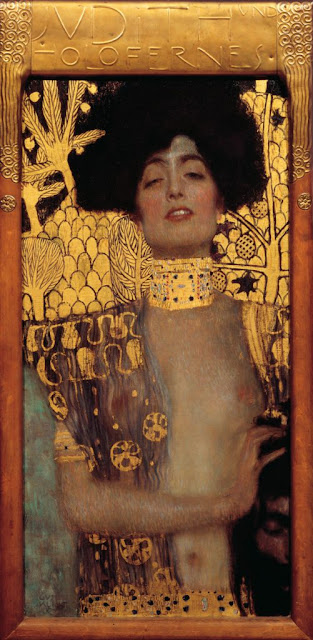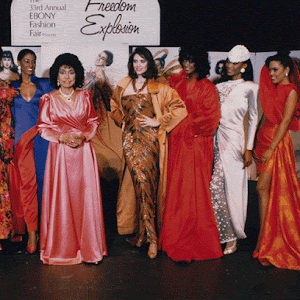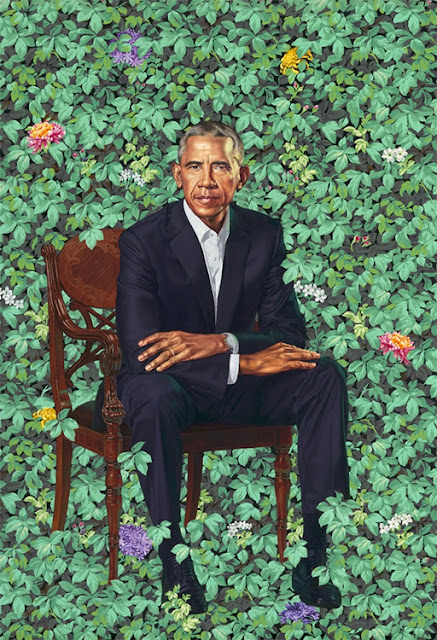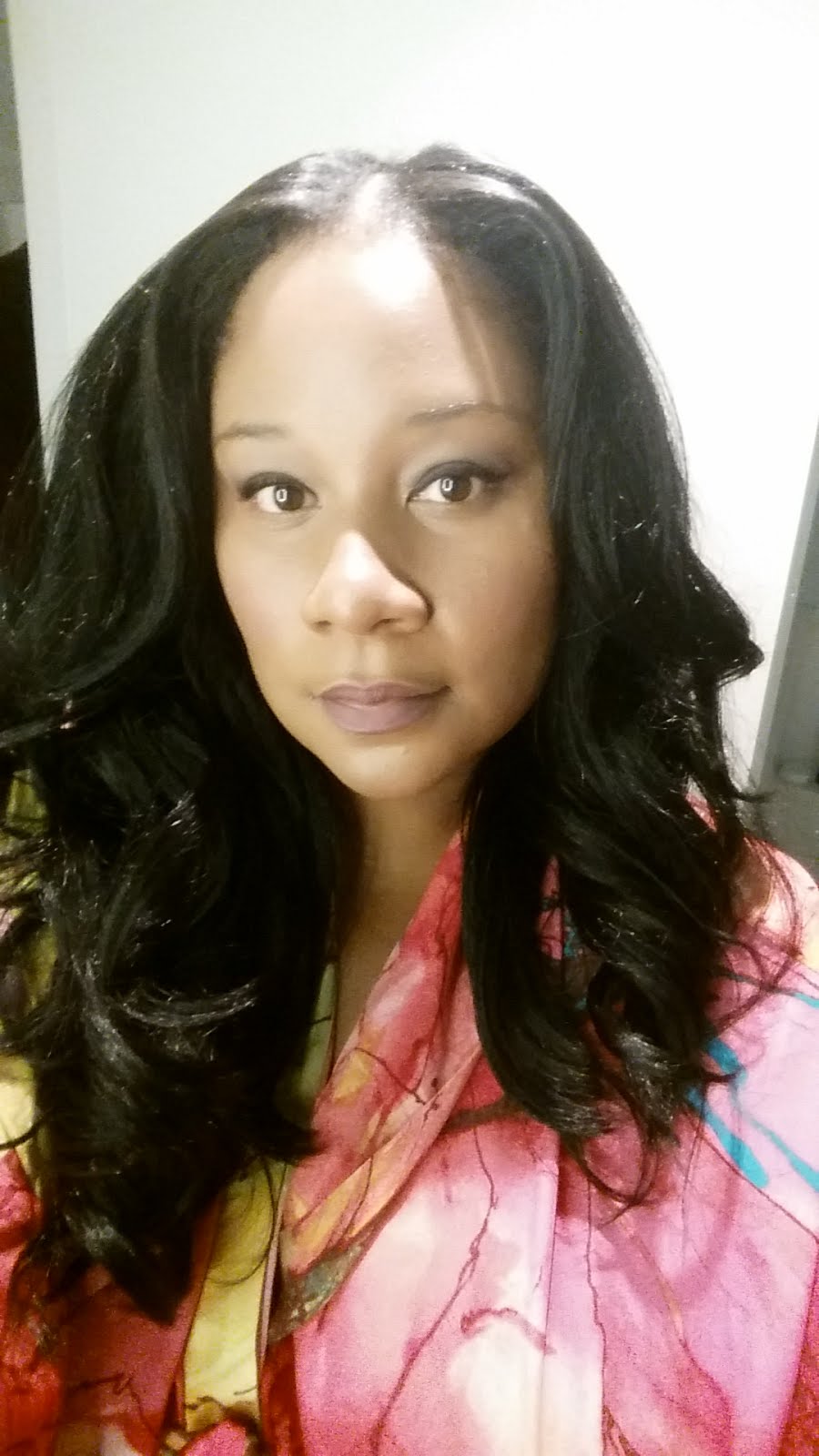 |
| Kehinde Wiley, Judith Beheading Holofernes, 2012 |
Almost immediately following the unveiling
of President Barack Obama’s official portrait by artist Kehinde Wiley, a small outcry was raised
because in 2012, Wiley had painted two majestic portraits of black women brandishing
the decapitated heads of a white women.
The voices claimed that the piece was racist.
 |
| Kehinde Wiley for the New York Times. His other version of Judith Beheading Holofernes in the background. |
I thought to myself, ‘Yeah, okay…please don’t attempt to
narrow his creative genius down to racism, when it goes so far beyond that.’
 |
| Artemisia Gentileschi, Judith Slaying Holofernes, 1614-20 (wikipedia) |
The pieces are actually a modern take on the numerous works depicting the fictional biblical story of Judith and Holofernes and have
little to do with their idea of racism and more to do with racial and gender identity and
inequity, society’s ideas of what is beautiful, and the portrayal of women, specifically
black women, in art history. Wiley
simply uses Judith and Holofernes to illustrate these themes in a most amazing
and provocative manner.
 |
| Kehinde Wiley, Judith Beheading Holofernes, 2012 (artnet) |
As the story goes, Judith, a beautiful widow, is upset
with her Jewish countrymen for not trusting God to deliver them from their
foreign conquerors. She goes with her
loyal maid to the camp of Holofernes, an Assyrian general who was about to
destroy her home, the city of Bethulia.
Ingratiating herself with the besotted Holofernes, she is allowed to
enter his tent, where he lies in a drunken stupor. She decapitates him and his head is taken
away in a basket. Without their leader,
the Assyrians abandon their plan and Israel is saved.
 |
| Triophime Bigot, Judith Cutting off he Head of Holofernes, 1640 (wikipedia) |
It is a story that has been painted so many times, it has
become an artistic theme. Since the
Renaissance, Judith has been depicted as a saintly heroine, and an erotic femme
fatale. Portrayals of her have ranged
from violent to sexual to triumphant.
Sometimes she has even been painted in the nude. Judith is an example of
the Power of Women art theme in the Northern Renaissance.
 |
| Franz von Stuck, Judith. 1928 (wikipedia) |
 |
| Franz von Stuck, Judith and Holofernes, 1927 (wikipedia) |
 |
| Caravaggio, Judith Beheding Holofernes, 1598-1599 |
 |
| Gustav Klimt, Judith I, 1901 |
 |
Lucas Cranach the Elder, Judith with the Head of Holofernes,
1530
|
 |
| August Reidel, Judith, 1840 |
 |
Cristofano Allori, Judith with the Head of Holofernes, 1613
|
 |
Fede Galizia, Judith with the Head of Holofernes, 1596
|
I have always seen Judith as a heroine doing what she must
to protect her home. It is very much in
the vein of “no one is going to save me, so I must save myself…and everyone
else.” A theme that black women know all
too well.
As a black man, Wiley recognizes the connection of the Judith
beheading Holofernes story to the story of black women in American society since
we were first forcibly brought here in the 18th century.
In a 1962 speech, Malcolm X said, “The most disrespected
woman in America is the Black woman. The most unprotected person in America is
the Black woman. The most neglected person in America is the Black woman."
And yet, here we are, still powering through to save ourselves…and
everybody else. We’ve seen it time and
time again over the years. Most recently,
we’ve seen black women, tired of a feminist movement that didn’t include intersectionality,
start the black feminist movement in the 1980s.
We’ve seen black women, tired of watching our black men (and women) die
at the hands of police, start the “Black Lives Matter” movement. Even the “Me Too” movement was started by a
black woman, Tarana Burke, and then co-opted by white Hollywood. And let’s never forget that it was black
women who solidified Doug Jones’ defeat of Roy Moore in Alabama.
So yeah, we are familiar with the “fuck it, I’ll do it,”
spirit of the biblical Judith.
Wiley, a classically trained artist known for his style of
taking on the works of old masters, such as Peter Paul Rubens, Jaques-Louis
David, is widely familiar with the story of Judith and Holofernes and its
impact on art. His work focuses on
racism in art history, and comments on modern street culture and
masculinity. He reinvents classical
portraits by replacing the white sitters we usually see in museums worldwide
with contemporary African Americans. Wiley has stated, “The whole conversation
of my work has to do with power and who has it.”
The Wiley Judith and Holofernes paintings were a part of his
first series of portraits of women called “An Economy of Grace,”
intended to tackle the historic representation of women in art. In a 2012 New York Magazine article on the
series, Wiley said, “Women have always been decorative. They’ve never been
actors or possessed real agency.”
In one of the paintings, his Judith is Triesha Lowe, a
stay-at-home mom whom Wiley found at the Fulton Mall in Brooklyn. The severed
head is one of Wiley’s assistants. The North
Carolina Museum of Art foundation has said about the piece, “Wiley translates
this image of a courageous, powerful woman into a contemporary version that
resonates with fury and righteousness.”
 |
| Wiley's "Judith" is a stay-at-home mom named Triesha Lowe. |
The piece stands at eight feet by ten feet tall and references the
17th-century painting by Giovanni Baglione, “Judith and the Head of Holofernes”(1608). Wiley’s “Judith” is wearing a dark gown,
custom made by Riccardo Tisci for Givenchy, her hair is perfectly coiffed, her
brown skin glowing. There is a regal
tilt to her head. I see defiance, I see
resilience, I see black womanhood. It is
the same with his other Judith, who is clothed in a Renaissance-esque white
gown.
 |
| Wiley's other "Judith" |
Art critic Walter Robinson said about the piece that it
“suggests, with a jovial brutality, that Judith would prefer to be done with
white standards of beauty.”
 |
| Detail of Wiley's Judith Beheading Holofernes (artefuse.com) |
So yeah, nothing racist about it, just Wiley taking societal
norms and unapologetically throwing them back in the faces of the oppressors.





























